Motorcycle Investor mag
Subscribe to our free email news
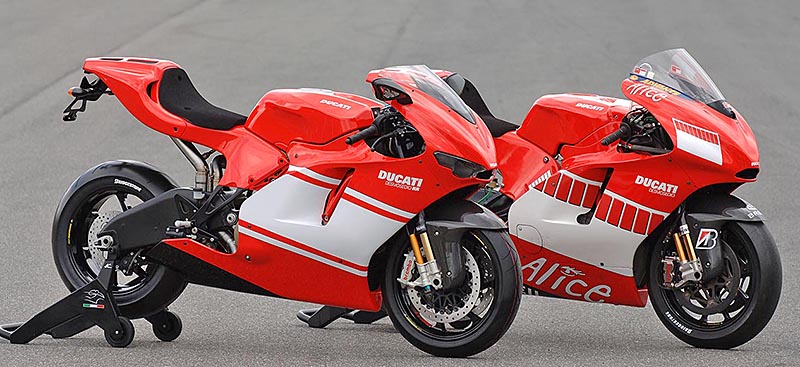
Buyer Guide – Ducati Desmosedici
by Guy ‘Guido’ Allen
(October 2020)
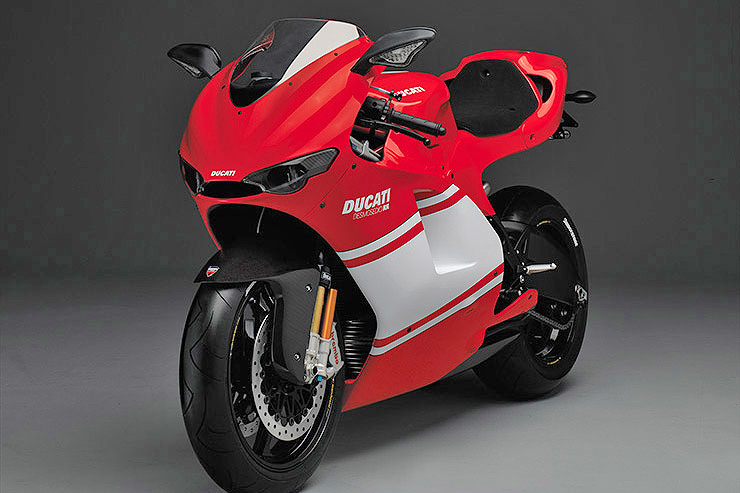
Ultimate Desmo
When Ducati promised a pukka racer rep, it delivered
If any manufacturer can legitimately make a claim to selling its customers reasonably faithful replicas of its top-echelon race machinery it’s Ducati. Over the years we’ve seen some ridiculous assertions from other makers, about how the latest model is influenced by GP engineering, when the whole engine configuration is entirely different and the chassis might as well come from a different planet. They have however had the same number of wheels…
When it comes to Ducati, however, typically fast but sometimes fragile superbike replicas in differing grades have long been available, while bikes as far back as the original 750SS claim clear racing roots.
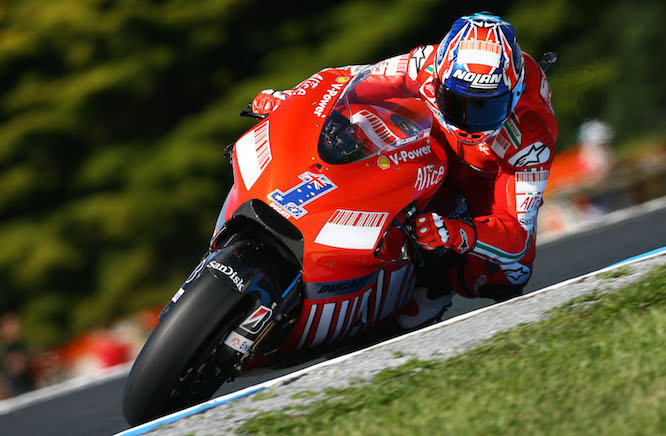
However the pinnacle was unquestionably the 2006-2007 Desmosedici RR, marketed in earnest during 2007. That was the year Ducati finally snared a MotoGP World Championship with Australian Casey Stoner (above) in the saddle, though the road bike was much more closely based on the 2006 GP6 machine.
Let’s walk back a little to look at how this came about. Though Ducati had long been a dominant force in world superbike, pretty much since 1990, it was not an effective player in GP racing over the same period. (There was a relationship with Cagiva, but that’s a convoluted story for another day.)
Roll on to 2002 and the premier grand prix class switches from 500c two-strokes to 990cc four-strokes, aka MotoGP – a clear opportunity for the Italian firm, which announces it will enter the class in 2003.
Clearly there was a temptation to develop its superbikes to MotoGP levels of performance, but that was soon ruled out. The company’s engineers, led by Filippo Preziosi, instead started investigating a V-four.
In many respects this was to be a traditional Ducati. A steel trellis frame was on the cards (as against an aluminium twin-spar unit), with a 90-dgree vee engine, with (of course!) desmodromic valves. The four-valve per head helped generate the name – Desmosedici. Desmo as per the obvious, and sedici as in sixteen valves.
The race department initially played with two versions of the powerplant: one with a conventional firing order and the other a ‘twin-pulse’ where cylinders were paired and fired at the same time. The latter arrangement was judged to have subtle advantages on the track, but it needed further development and was reserved for the next season.
Perhaps against the expectations of everyone except the machine’s designers and the people paying the bills, the first season was a roaring success. In its first race (Japan) the Desmosedici placed third and fifth with Loris Capirossi and Australian Troy Bayliss doing the honours.
Capirossi went on to score a win at Catalunya – its sixth race. In fact it was a year littered with podium places, though the following season, 2004, was far less straight-forward with two podium places and a lot of retirements. The crew suffered a mixed few years after that, with a high point being Capirossi taking third in the championship in 2006, until Stoner’s title-winning effort in 2007.
This was also an ideal opportunity for the factory to put a road-going version of its racer on the road – a prospect that was announced as early as 2004 during the company’s customer gathering at Misano.
When you think about it, there was no physical reason why other makers couldn’t do something similar - that is, produce a close road replica of a race bike. But there’s something about Ducati that made the decision unsurprising. The questions were, for those who might be in the market for one: how much, how many and when?
How much? Let’s start talking a list price of around US$72,500. Allow for taxes and exchange rates and you’re talking closer to $100k in Australia. There was precedent for uber-expensive factory specials, such Honda’s NR750, or Harley’s VR1000, though this was heading for new heights.
How many? This was the big surprise. Though hand-built at a stratospheric price, the decision was made to build 1500 – far more than the 300-400 initial speculation suggested. That volume sold with little difficulty.
And when? From 2007 for the 2008 model year, though deliveries and sales may have trailed into 2009.
You have to say Ducati was as good as its word when it came to delivering. The RR was unquestionably a close replica of the real thing in general architecture and a lot of the detail. While an unmodified MotoGP winner would never make it onto the road legally in this part of the world, what punters got was close enough.
The 989cc engine was running the twin-pulse configuration with crank pins offset by 70 degrees, sand-cast cases, and a lot of titanium alloy hardware inside, including conrods and much of the drive train.
Feeding this was a very high-end Magnet Marelli fuel injection system using 50mm throttle bodies.
Two levels of tune were available: with a road-legal exhaust it made 180 horses, while a race exhaust and ECU unleashed the full 200. Now these days 200 horses may not seem such a big deal – but back in 2007 it was, particularly in a motorcycle claiming a 171kg dry weight. That was good enough for a 300-plus km/h top speed.
One area that really distinguished the RR was the suspension, which really was straight off the GP6 machine, and laid claim to being the most advanced system ever bolted to a road bike.
Up front there was a 43mm Ohlins 353 pressurised fork, with the distinctive gold cartridges sitting proud of each leg. Out back you got more Ohlins gear with a similarly sophisticated arrangement for adjustment.
Braking was of course by Brembo and was similar in spec to the wet set-up on the GP machinery.
The Alan Jenkins-designed carbon fibre bodywork was available in two colour schemes: Team Version and Rosso GP.
Going over the ride impressions of the time, you can forgive the assorted reviewers for sometimes getting carried away. This quote from Motor Cycle News in the UK sums up the feeling of the time: “There has never been a road motorcycle like the Ducati Desmosedici RR, it’s so stiff, fast and focused that it makes R1s seem soft an cuddly by comparison.”
The catch with a motorcycle like this is it would take a brave rider to really give it a thrashing, or someone who owned two! Keep the good one and go for a fang with the other. You did occasionally see some brave soul out and about with their RR, though I can’t recall ever seeing one put up on the back wheel to entertain a bunch of mates.
The thing is a pukka race replica and will probably never make a great road motorcycle for the majority of people and, even then, it won’t work to its full potential on anything other than a track – which is a statement of the obvious rather than a criticism. UK MCN again: “It is the best handling road motorcycle ever built, you just need to be Casey Stoner to appreciate it.”
Like all these ‘halo’ models, their value is as much about the story and ideas behind them as it is the motorcycle itself. Yes, it’s good to know that it’s fast and a little uncompromising – no-one wants a complete show pony.
Because Australia is a big Ducati market and because a fairly generous number were built, it’s not particular difficult to find one for sale. (See sidebar below for prices.)
At this level, your biggest concern is to ensure you get the real thing (easy enough to research) and that it comes with the complete owner package. That means all the books, certificates and whatever else came with it.
Modifications (other than the factory race gear) won’t add a damned thing to the value, but having all the original parts will be critical. I’d also be looking for clear evidence of the ownership trail from the importer to date. Maintenance is complex and expensive, so you will want to be sure this has been carried out or that the bike has been dry-stored correctly.
Will it make a good investment? Frankly most of us can have as much fun on a $5000 motorcycle, but that’s not the point. Yes, it will always be worth something and beyond that you need to be a in a position to take a modest financial risk.
Classic bike expert Ian Falloon rates them as an investment. See the sidebar below.
Aside from that , for a Ducati nut, this represents an ultimate trophy machine, something to have because you can.
---
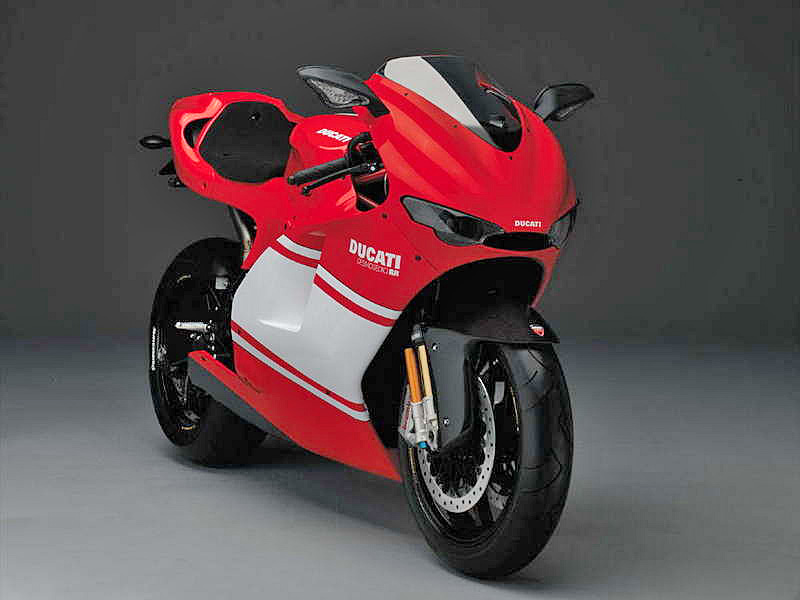
In the market
At the time of writing, Bikesales in Australia had #1221 listed, with 10,500km on the odo, at Au$75,000 (US$54,000, GB£41,600).
Shannons meanwhile had another – #0606 – coming up for auction with an estimate of Au$65-75,000 (US$47-54,000, GB£36-41,600)
.
Just Bikes had #1080 listed in Adelaide, claiming 780km, for Au$90,000 (US$65,000, GB£50,000).
Online auction site Bring a Trailer in the USA sold #0780 with 3000 miles for Au$62,600 (US$45,250, GB£34,700) in August 2020.
Looking at auction results for the last few years suggests prices had been slowly but steadily dropping through to 2019.
While supply is plentiful, Ducati and classic bike expert Ian Falloon in October 2020 rates them as an investment. He believes they have bottomed out, are on the rise, and are the 'green frame' of the future.
For the moment, expect to pay around Au$75,000 (US$54,000, GB£41,000) for a very good low-miler.
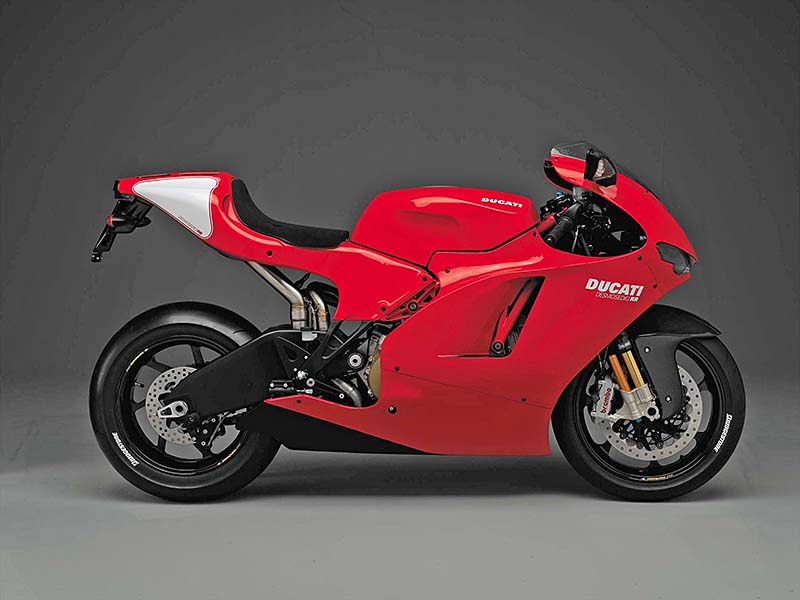
Ducati Desmosedici
Good/bad
Good
Ultimate Ducati toy
Proper GP replica
Not so…
The price!
Recommended reading: The Art of Ducati, 2014, by Ian Falloon and published by Motorbooks.
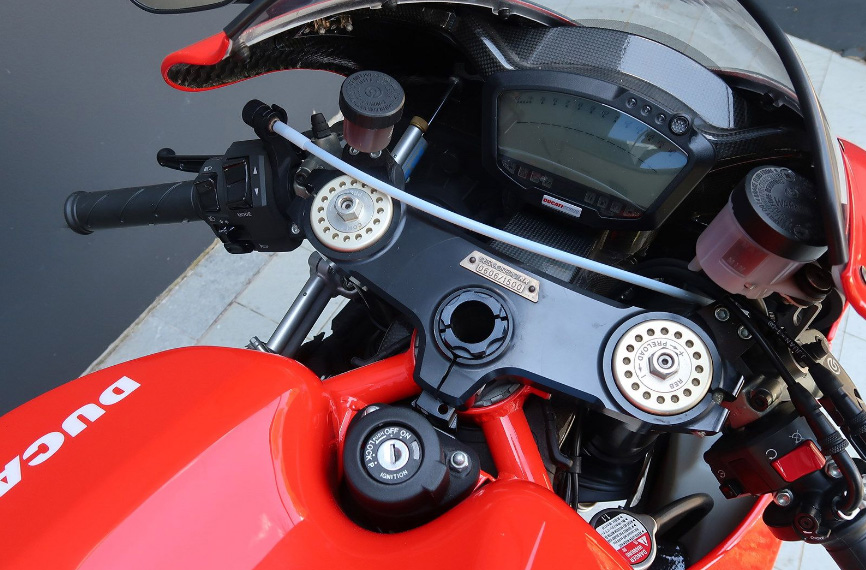
SPECS:
Ducati Desmosedici RR
ENGINE:
TYPE: Liquid-cooled, four-valves-per-cylinder, 90-degree V-four
CAPACITY: 989cc
BORE & STROKE: 86 x 42.5mm
COMPRESSION RATIO: 13.5:1
FUEL SYSTEM: Magnet Marelli fuel injection with 50mm throttle bodies
TRANSMISSION:
TYPE: Six-speed, constant-mesh,
FINAL DRIVE: Chain
CHASSIS & RUNNING GEAR:
FRAME TYPE: Steel trellis
FRONT SUSPENSION: Ohlins pressurised 43mm, full adjustment
REAR SUSPENSION: Ohlins monoshock, full adjustment
FRONT BRAKE: 330mm discs with 4-piston monobloc radial-mount calipers
REAR BRAKE: 240mm disc with two-piston caliper
DIMENSIONS & CAPACITIES:
DRY WEIGHT: 171kg
SEAT HEIGHT: 830mm
WHEELBASE: 1430mm
FUEL CAPACITY: 15lt
WHEELS & TYRES:
FRONT: Forged Marchenisi alloy with 120/70 R17
REAR: Forged Marchenisi alloy with 200/55 R17
PERFORMANCE:
POWER: 147kW @ 13,800rpm (track trim)
TORQUE: 116Nm @ 10,500rpm
-------------------------------------------------
Produced by AllMoto abn 61 400 694 722
Privacy: we do not collect cookies or any other data.

Archives
Contact




